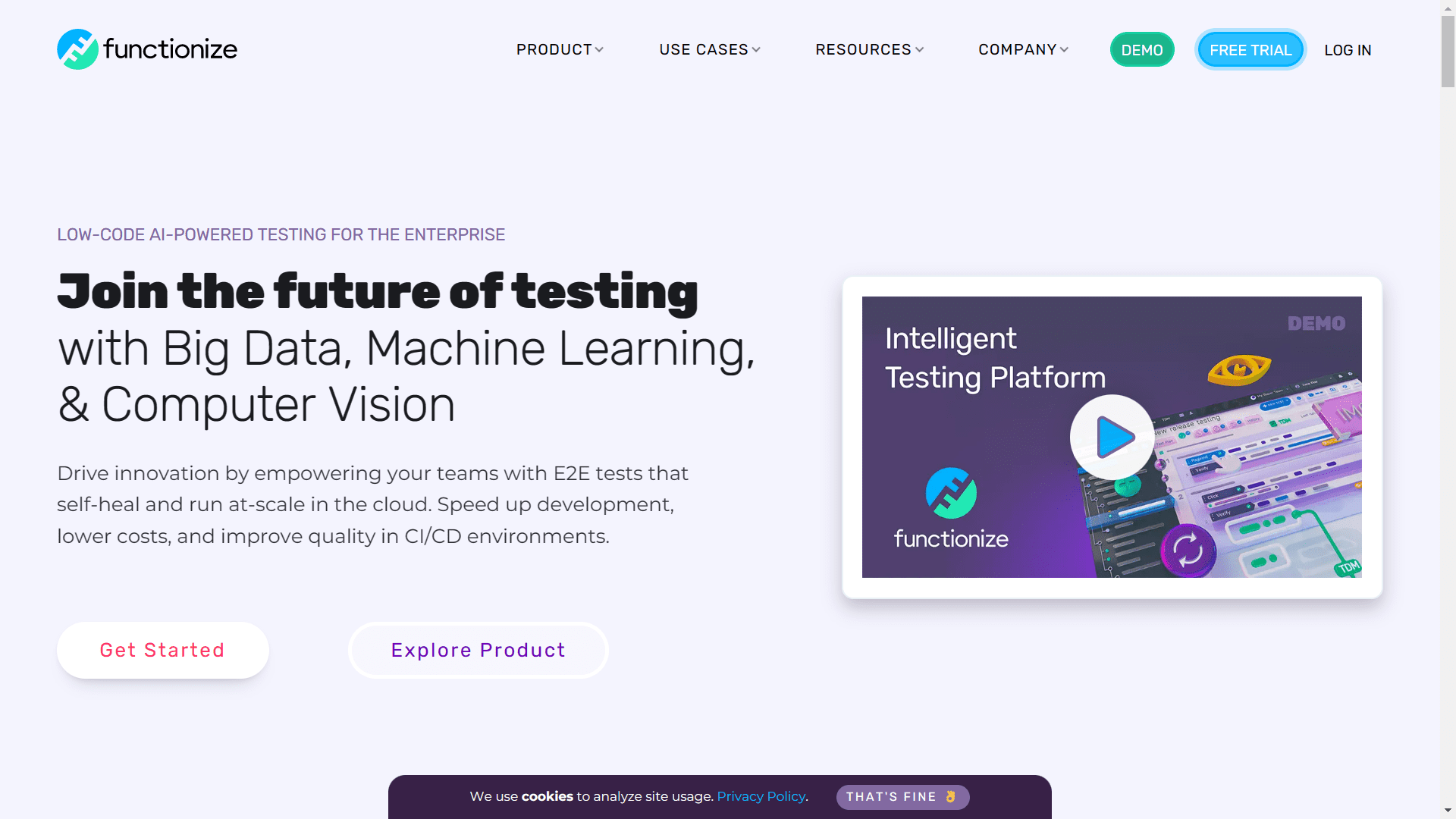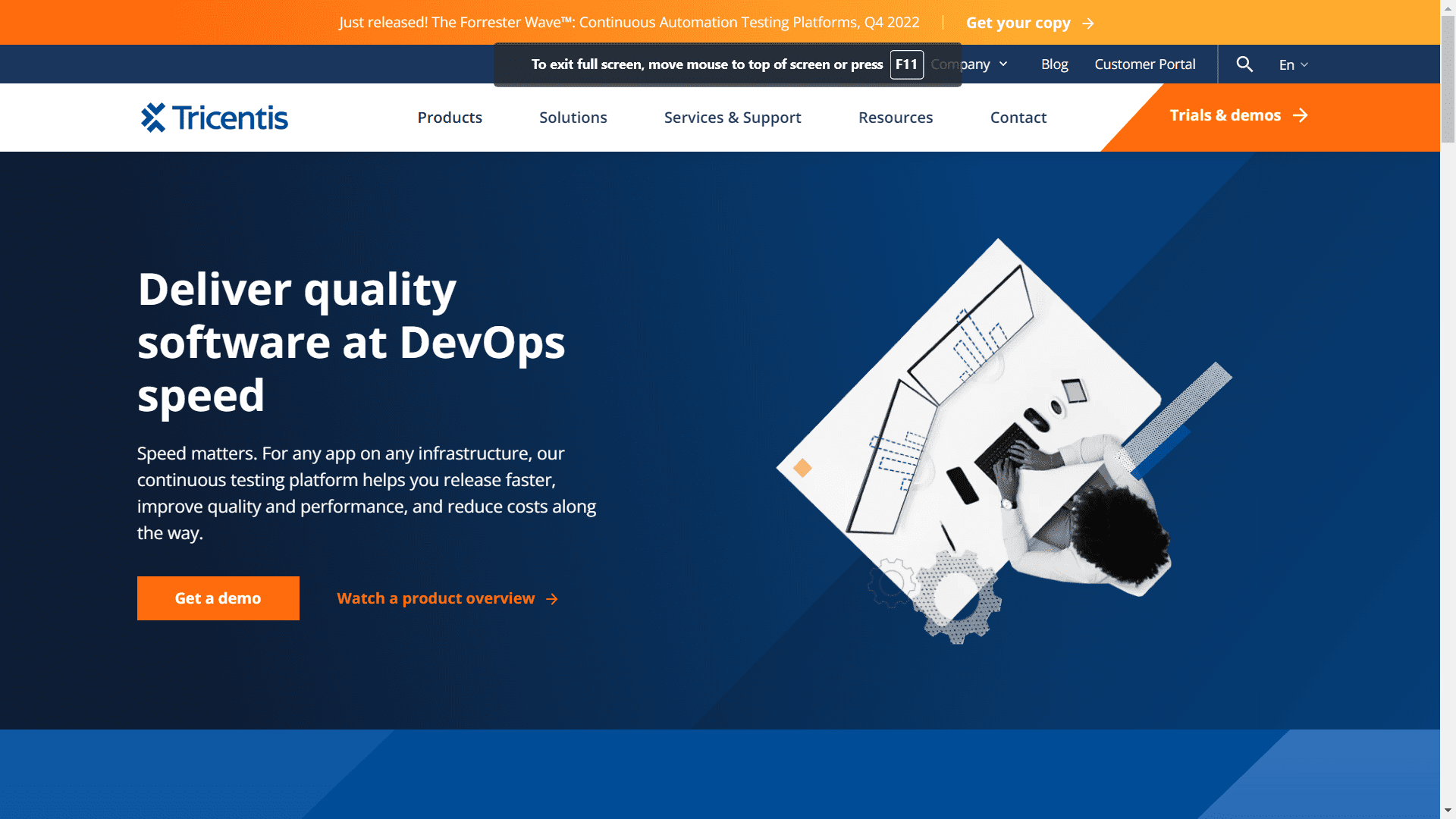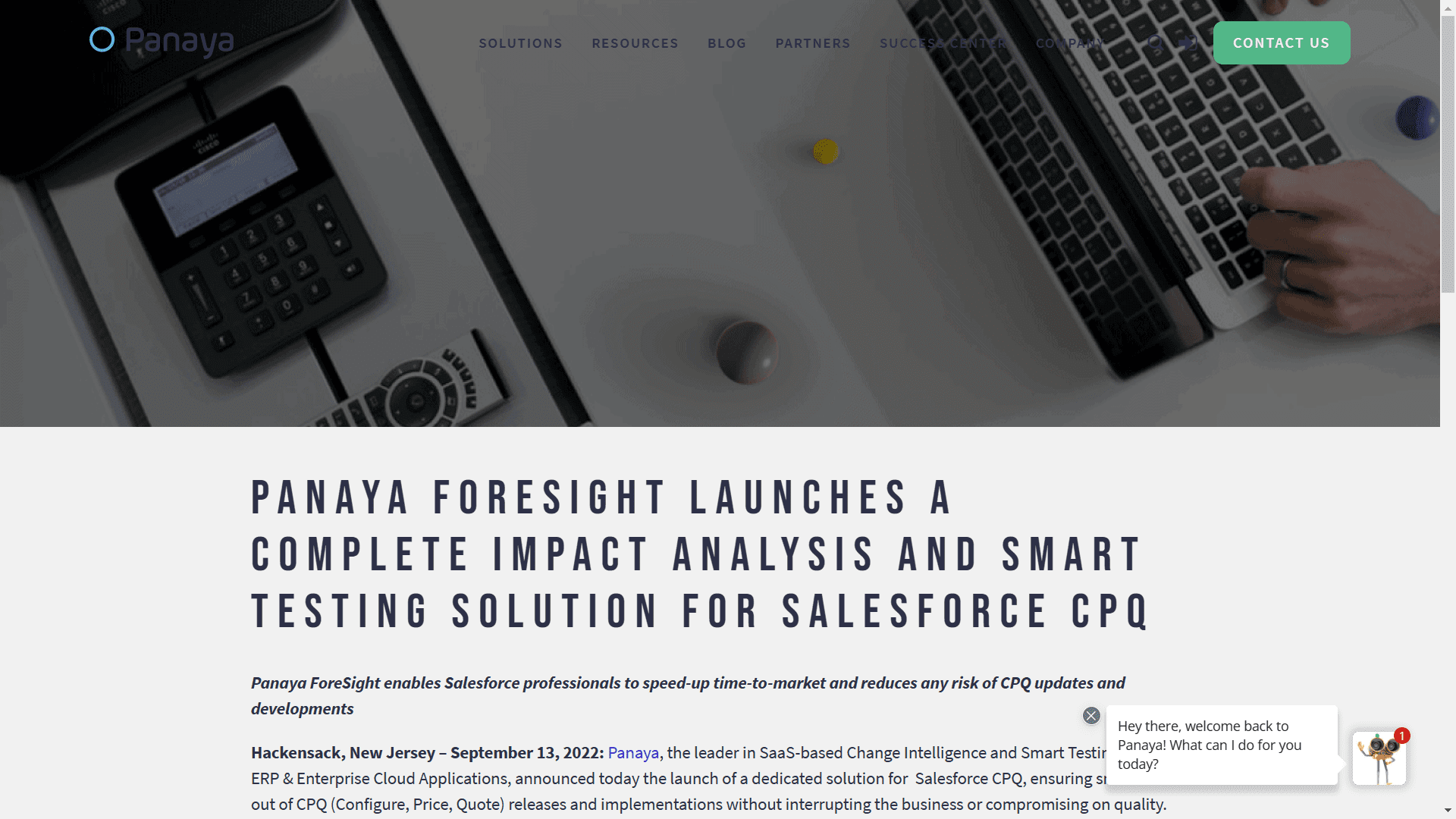Salesforce testing provides a comprehensive and powerful set of tools to ensure your sales processes run smoothly. It helps you evaluate changes to sales data, application performance, and customer experience.
With Salesforce testing, you can monitor sales campaigns’ effectiveness, ensure sales reps are meeting their goals, and even pinpoint any potential problems in the sales process. It’s an invaluable tool for sales teams and can make a big difference in sales performance.
By employing best practices and cutting-edge technology, businesses can ensure their customers get a quality product that meets their needs and provides them with effective solutions. This guide will overview Salesforce testing and why it’s so important.
So, What Exactly is Salesforce Testing?
Salesforce testing evaluates and validates an organization’s Salesforce platform to ensure that it meets the requirements and functions as expected.
This type of testing typically includes various activities, such as:
- Stress Testing
- System Checks
- Data Validation
- Security Testing
- User Acceptance Testing
- Performance Optimization
Organizations must conduct Salesforce tests regularly to ensure that any changes made within their Salesforce environment do not cause disruptions or adversely affect other parts of the system.
During these tests, teams of testers can identify any potential issues before they become major problems and have time to fix them efficiently. This can help organizations maintain their overall efficiency while also ensuring high levels of customer satisfaction.
In addition to accuracy and reliability, Salesforce testing also helps improve user experience by ensuring users can easily navigate the system and access all the features they need quickly and efficiently.
Organizations can increase employee productivity by providing a better user experience while reducing training costs associated with new hires.
Is Salesforce Testing Difficult?
Salesforce testing can be difficult for those without the necessary technical background or experience. The complexity and scalability of the Salesforce platform make it difficult to test, as a single change can have major ripple effects on multiple areas.
As an enterprise cloud computing platform, Salesforce requires a deep understanding of the software’s architecture and its various components to ensure that data is accurately gathered and stored within the system. This is one of the many reasons why your small business needs the cloud.

Salesforce has a wide array of features and customization options, meaning testers must consider each variation to properly assess an application’s performance. These applications are often complex and integrate with many outside systems, such as ERP solutions or other websites.
Salesforce testing must also include a comprehensive review of all elements of the software, including the following:
- Web services APIs
- Data model structure
- User interface design
- Integration points with external systems
Testing teams must also clearly understand how changes to any part of the system might affect other areas.
Additionally, Salesforce testing should include rigorous unit testing, which thoroughly examines individual code modules and regression tests that identify any defects caused by modifications to the existing codebase.
However, due to the complexity of this software platform and its many components, it is highly recommended that an experienced Quality Assurance (QA) Engineer or Consultant lead any Salesforce testing project to maximize efficiency and ensure quality results are achieved.
Salesforce Testing Challenges
Salesforce testing is a complex process requiring a great deal of planning and expertise. The challenge lies in properly testing for compatibility between Salesforce and other applications and accurately troubleshooting any errors that may occur during implementation or usage.
Salesforce testing includes database integrity checks, code reviews, and code coverage tests to ensure that all features work correctly and provide the expected results. It also requires in-depth knowledge of data migration processes to ensure that customer data is correctly moved from an existing system into Salesforce.
A major component of any successful Salesforce setup is understanding how security protocols are configured and preventing malicious users from gaining access to confidential or sensitive information. Therefore, Salesforce testers must have a thorough understanding of authentication protocols.
Additionally, Salesforce testers need to perform adequate regression tests after any new code changes are implemented, which helps identify any potential bugs that may arise due to the changes.
This can make the process more challenging than other types of software testing, but it also provides greater opportunities for long-term success when properly implemented.
Does Salesforce Testing need Coding?
Salesforce testing does require coding, as this type of software is highly technical and requires a strong understanding of coding principles. While Salesforce users do not need to know the specific syntax and grammar of a particular programming language, they need to be familiar with the data structures and development environment used by Salesforce.
To perform successful Salesforce testing, knowledge about major programming concepts, such as Object-Oriented Programming (OOP), principles, and design patterns, is required.
Additionally, skills related to source-controlling tools are also important for the job since testers need to work with various versions of Salesforce’s codebase and keep track of changes in the source code.

It is also beneficial for testers to be aware of automation frameworks, which can help automate tests for front-end web applications and mobile applications.
Many online platforms offer courses on Salesforce development that help testers build their knowledge base while enabling them to reach their ultimate goal.
Why Conduct Salesforce Testing?
Salesforce testing is an incredibly important step in any business process. This type of testing helps ensure that the information, products, and services a company provides are accurate and up to date.
Companies can benefit from Salesforce testing because it allows them to identify errors and inaccuracies in their applications, processes, and data, which could lead to costly mistakes if left unchecked.
Salesforce testing also provides insight into how well the current systems perform, allowing companies to make changes or updates to improve performance and user experience.
Additionally, Salesforce testing can help identify potential security vulnerabilities or other risks within a system and allow teams to quickly address them before they have a chance to cause damage.
By taking advantage of Salesforce testing, businesses can reduce costs associated with making fixes after the fact, save time by addressing issues before they become major problems, and improve customer satisfaction by providing them with a better overall experience.
Types of Salesforce Testing
There are many types of Salesforce tests that businesses can conduct. However, the two main testing processes used to evaluate the features and functionality of Salesforce applications are automated and manual testing.
Automated testing
Automated testing is a software testing process that uses special software to control the execution of tests and compare actual outcomes with expected results.
This type of testing reduces the effort necessary for repetitive tasks, such as regression testing, which verifies that changes made in one part of a system do not introduce errors elsewhere.
A Salesforce automation testing tool enables Salesforce testers to create scripts that can be used to quickly run tests on different features of the application.
Automated testing can also quickly identify performance issues or scalability problems before they become major problems in production.
For example, Salesforce automated testing allows teams to create powerful tests without scripting, reducing the time and complexity associated with manual test creation.
Some advantages of automated testing include the following:
- Accuracy
- Efficiency
- Scalability
- Consistency
- Repeatability
Automated tests can also be reused in different contexts, making them especially useful when an application must be deployed in multiple environments. Additionally, automated tests eliminate the need for manual verification when releasing new features or systems updates.
With automated testing tools such as Salesforce’s test automation framework, teams can easily identify issues and validate changes quickly before they reach production users.

Manual Testing
Manual testing is a type of software testing that involves manually evaluating and verifying the functionality of software applications and products. Unlike automated testing, manual testing requires more manual labor and attention to detail.
This testing occurs during the development phase when developers develop or upgrade the product. Manual testers check for errors and bugs in the code, ensuring that features are working correctly and as expected.
Manual testers use various methods to ensure accuracy in results, such as:
- Black-box testing
- White-box testing
- Exploratory testing
- Equivalence partitioning
- Boundary value analysis
These testers also perform functional tests to make sure that all components are integrated well and work together as they should. They also need to understand user stories and their intended use cases to understand how a feature should be tested.
Additionally, manual testing can be beneficial in detecting errors or issues with specific hardware configurations or platforms. It also enables testers to interact directly with the system and individually explore every component or feature.
One of the main drawbacks is that manual testing can be time-consuming and laborious since every single function must be tested manually rather than having a program run through it automatically.
However, when combined with automated testing tools, manual testing can provide robust results more quickly while still ensuring quality assurance.
Levels of Salesforce Testing
Salesforce testing is done in multiple stages, with different levels of testing conducted at each stage. Salesforce testing helps developers properly identify and resolve any issues or bugs before the application reaches production users.
These are the basic levels of Salesforce testing:
- Unit testing
- A/B testing
- System testing
- Production testing
- Regression testing
- User Acceptance testing (UAT)
Let’s take a closer look at each level of Salesforce testing!
Unit Testing
Unit testing is a software development process that tests individual components of a system to verify their behavior and assess the quality of their output.
It is designed to ensure that the entire system is functioning correctly and independently and meets specific requirements while improving the overall code quality.
When done properly, unit testing can detect potential problems that would otherwise be difficult to identify. It can also help developers catch early bugs, quickly debug existing code, reduce development time, and achieve greater accuracy in results.
A/B Testing
A/B testing is a type of Salesforce testing that helps developers compare different versions of an application to identify which version works best for users.
It is used to evaluate the impact of changes made in the software, such as new features or design elements. This makes it easier to determine which changes should be implemented and whether they benefit the application.
Here are 5 A/B tests to help get you started!
System Testing
System tests are conducted once the units have been combined into a system or application. It helps identify any errors within the integrated components and ensures that the application works as expected.
This testing requires that the entire application be tested as a whole, not as individual pieces. System testing ensures that all components are working together properly and meeting user expectations when integrated.

System testing includes the following:
- Ensuring proper integration among modules
- Verifying the system’s response to various inputs
- Ensuring the accuracy of data flow between modules
- Verifying the proper implementation of security protocols
- Checking for compatibility with third-party software and databases
System testing also ensures that requirements for scalability and extensibility are met so that any additional features or changes can be incorporated without disrupting existing systems. However, these tests should include manual and automated tests to verify different scenarios and use cases more efficiently.
Additionally, system tests should focus on validating the business logic implemented within the application to ensure accuracy in results generated by the application. With adequate planning and execution of system tests, organizations can minimize costly reworks due to errors in their software applications.
Production Testing
Production testing is conducted once the application is deployed in a production environment. This type of Salesforce testing ensures that the application delivers accurate results as expected by all stakeholders and users, both internal and external.
It focuses on monitoring certain key performance indicators, such as:
- Response times
- Database queries
- Resource utilization
The main purpose of this process is to minimize defects, improve reliability, and reduce costs. Additionally, these tests can also include both automated and manual testing tools.
Production testing also verifies that any changes made to the application do not negatively affect its performance or existing features. This helps to prevent any further issues or disruptions from occurring once the application is released.
Regression Testing
After each round of changes or modifications, regression testing checks the entire system. It ensures that all features, settings, and configurations are working properly before releasing a new software version.
This testing also helps developers identify any unexpected behavior or unintended consequences caused by the latest changes. Regression tests can be run manually or with automated tools, but it is usually more efficient and effective when done with automation.
Additionally, regression testing can catch any errors in newly introduced features and help them resolve those issues before releasing a new version of their Salesforce application.
User Acceptance Testing (UAT)
User Acceptance Testing (UAT) is an important step in Salesforce testing. It helps to validate the application’s functionality from the user’s perspective and confirm that it meets their expectations.
UAT involves users or stakeholders who can provide valuable feedback on how well they can use the Salesforce application. This testing also helps identify any improvements or enhancements that can be made to the application.
UAT is typically conducted in the later stages of Salesforce testing and should always be done with real users. This helps to ensure that the Salesforce application works correctly and meets all requirements and expectations before it is released.
Salesforce testing automation tools ensure that Salesforce applications work as expected. They are a powerful way to ensure the quality and accuracy of an organization’s Salesforce platform.
Using automation testing tools can help reduce testing times and increase the accuracy of results, which helps organizations save time and money. Additionally, these tools provide a wide range of features for companies looking to improve their Salesforce testing process.
These are some of the most popular Salesforce testing automation tools on the market:
Functionize
Functionize is a cloud-based development and testing platform that leverages artificial intelligence (AI) to automate software testing. It enables developers to create test cases quickly and accurately without manual coding or scripting.

The platform also helps developers automate web, mobile, and API tests by automating test case preparation, execution, analysis, and maintenance.
Key Features:
- API testing
- Email testing
- Advanced analytics
- AI-assisted debugging
- Automated regression testing
Pros:
- Easy to use
- Offers real-time reporting tools
- Supports integration with Salesforce
Cons:
- Limited scalability options available
- There might be a learning curve for beginners
Tricentis
Tricentis is a leading provider of enterprise-level software testing solutions that help organizations quickly and accurately verify their applications for faster speed to market.

It also enables teams to reduce cost and complexity, improve test coverage, and increase security and compliance with automated software testing solutions.
Key Features:
- API Engine
- Interactive Testing
- Tosca Data Integrity
Pros:
- End-to-end testing platform
- Advanced automated testing tools
- Provides extensive integration options
Cons:
- Limited AI capabilities
- Expensive for small teams and companies
testRigor
TestRigor is an automated testing platform for Salesforce applications that helps organizations improve their customer-facing applications’ performance, reliability, and scalability. This cloud-based software enables end users to quickly and easily create tests for Salesforce objects such as accounts, contacts, opportunities, cases, and custom objects.

It also has very robust reporting capabilities so that businesses can track and monitor their Salesforce application performance over time. With its comprehensive set of features, TestRigor makes it easy for companies to ensure their customer-facing applications are properly tested to guarantee a high-quality user experience every time.
Key Features:
- API testing
- Slack-based support
- Mobile testing support
Pros:
- Easy-to-use interface
- Automates test maintenance
- Provides feedback with advanced analytics
Cons:
- Technical expertise is required
- It can be expensive due to licensing fees
Panaya ForeSight
Panaya ForeSight is a powerful, AI-driven testing tool for Salesforce. It offers businesses an end-to-end automated test suite that automates the testing process and helps them achieve faster time to market and higher quality products.

With Panaya ForeSight, organizations can quickly create tests based on their business rules and requirements, enabling them to instantly assess the impact of changes on their Salesforce environment. The platform also allows users to customize tests according to their criteria while providing insights into application performance.
Key Features:
- SAP Testing
- Salesforce CPQ
- Oracle Cloud Transition
Pros:
- Offers built-in debugging features
- Provides an intuitive user interface
- Supports a wide range of test types
Cons
- Has limited compatibility
- Costly subscription fees
There are a lot of great Salesforce testing automation tools on the market, and each offers different features and capabilities. When choosing the right tool for your organization’s specific needs, it’s important to consider what features are most important for your Salesforce process, how much support you will need, and how easy it is to use.
No matter which Salesforce testing tool you decide to go with, be sure to take the time to evaluate your options and find the one that fits your unique requirements best.
Are you a business owner interested in Salesforce testing? Do you have any questions about Salesforce testing? Let us know in the comments below!



